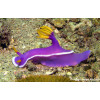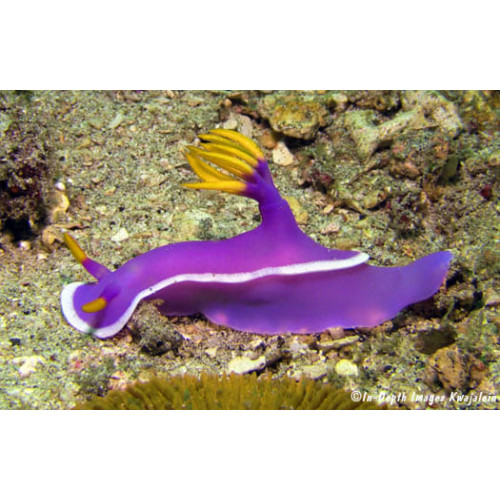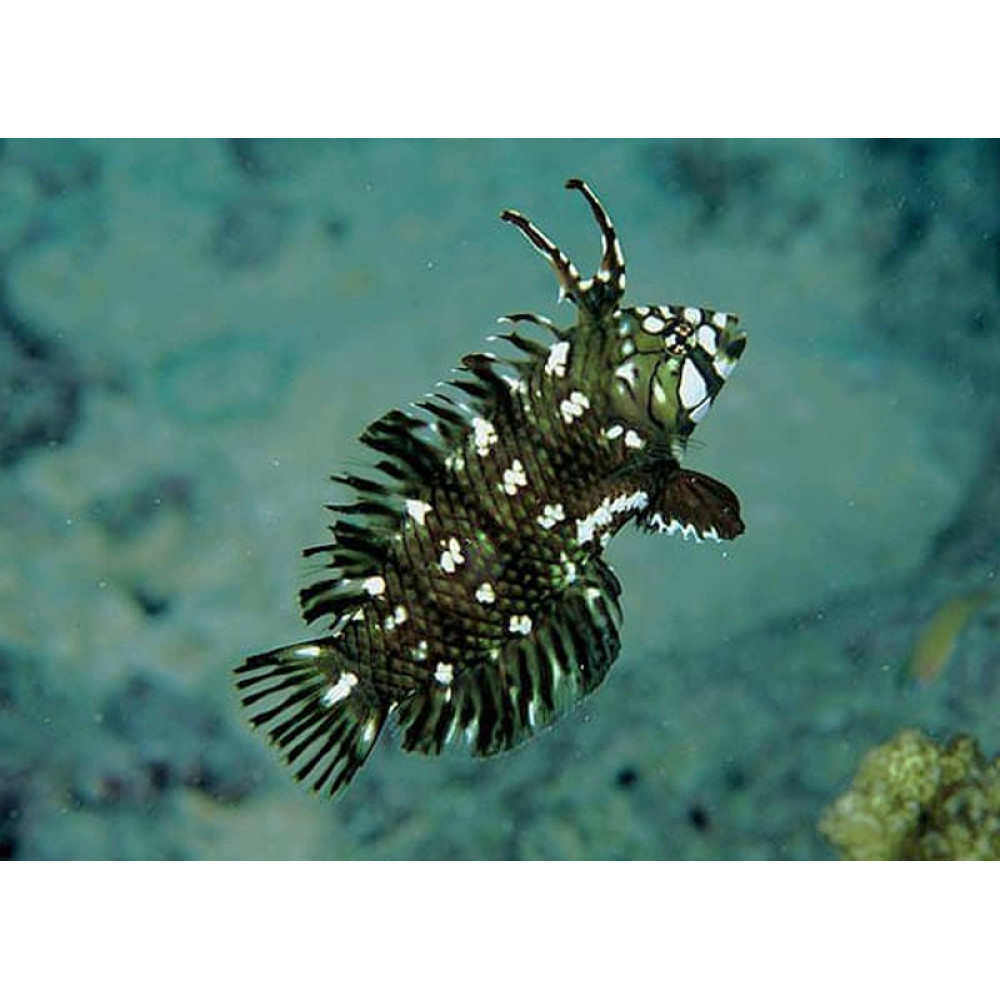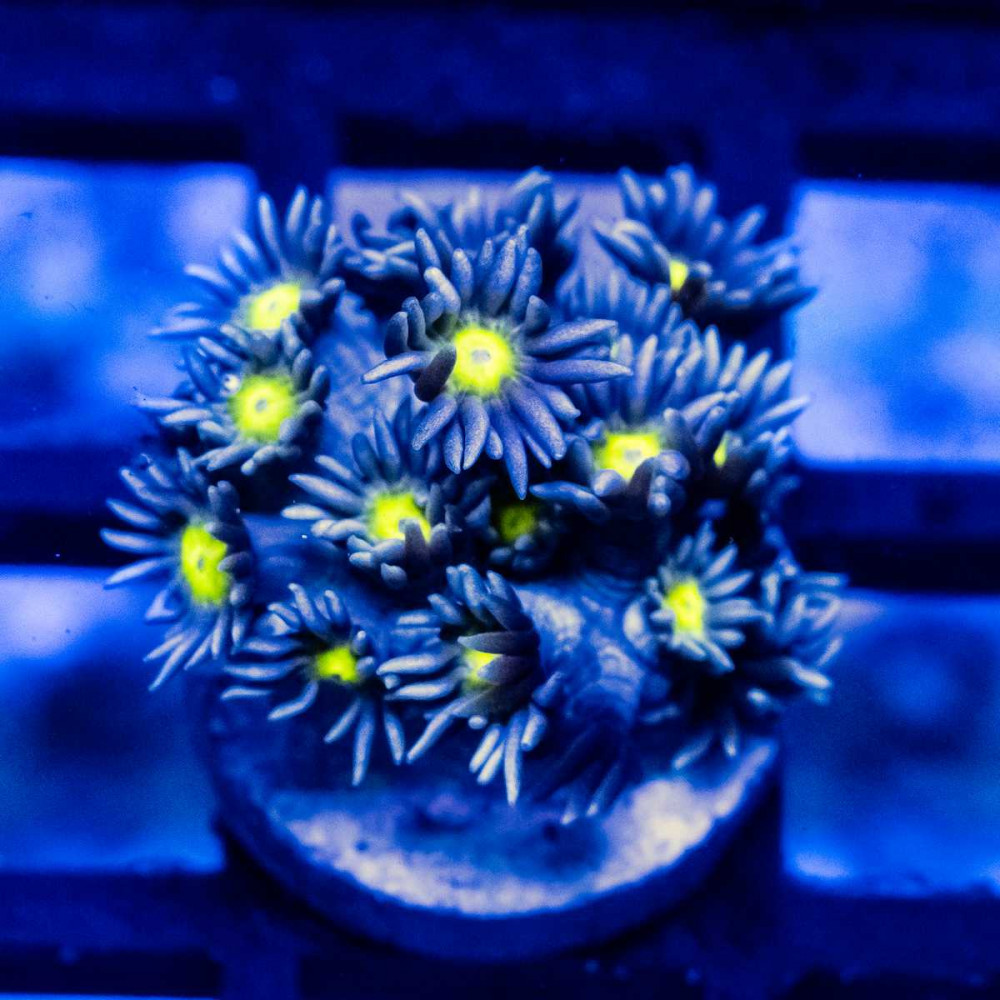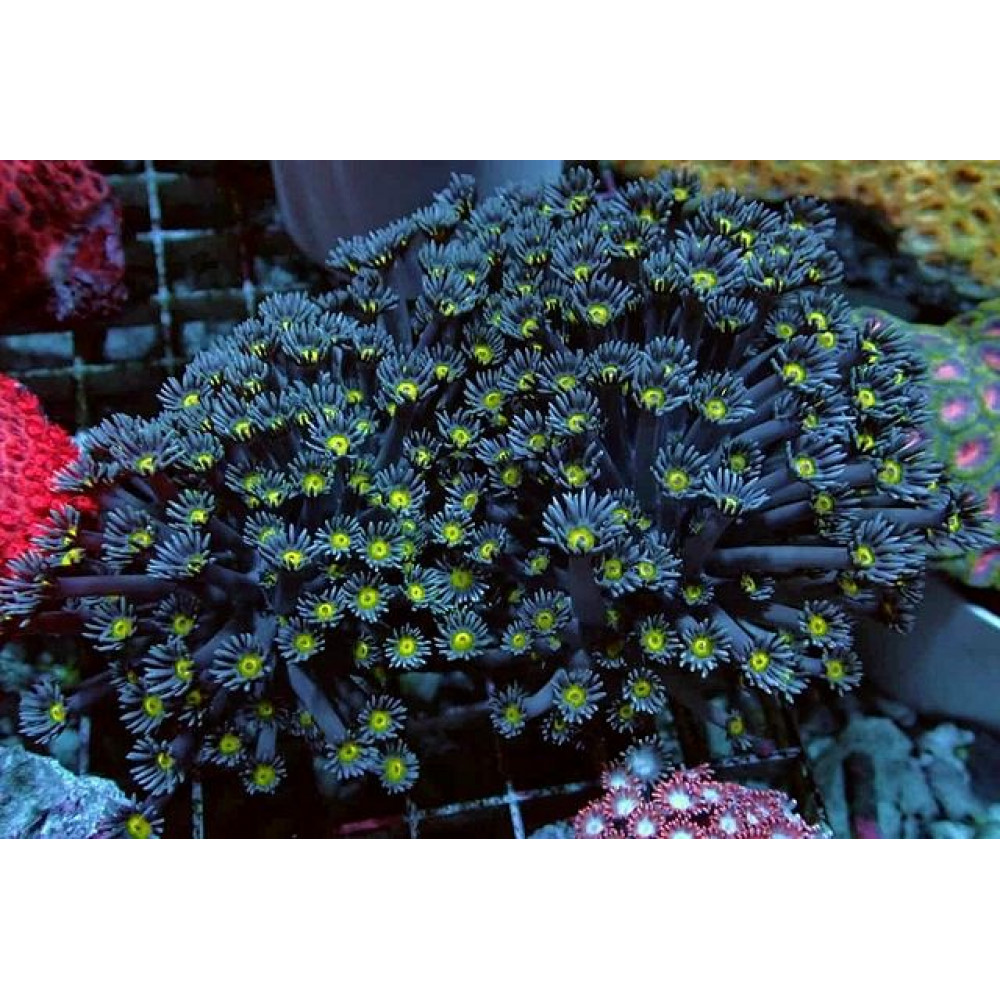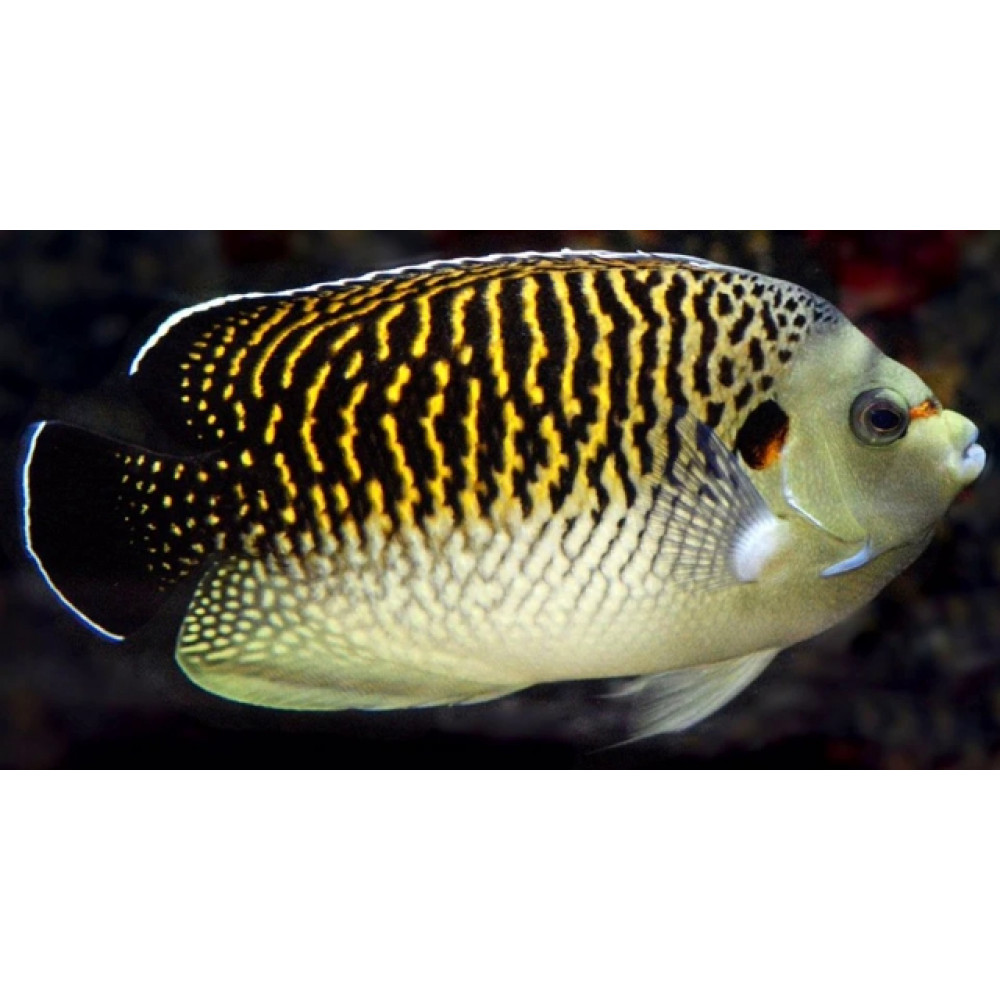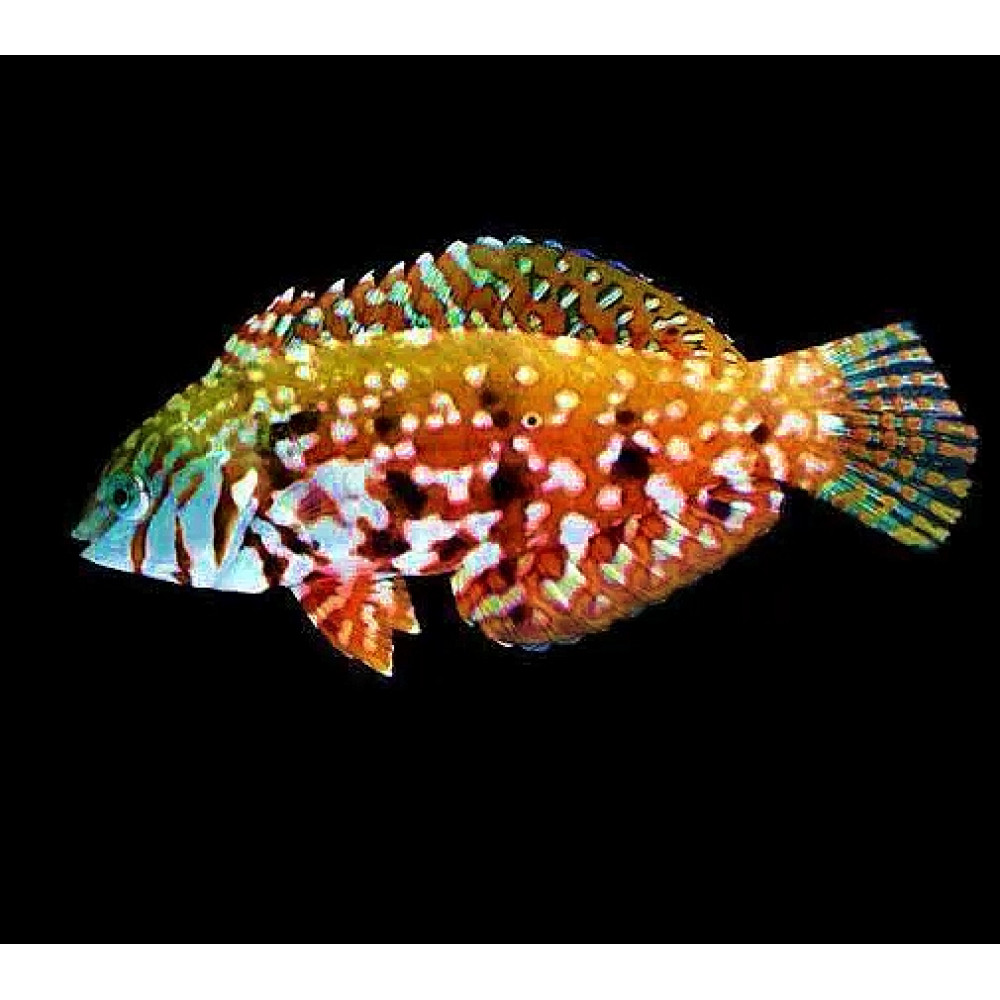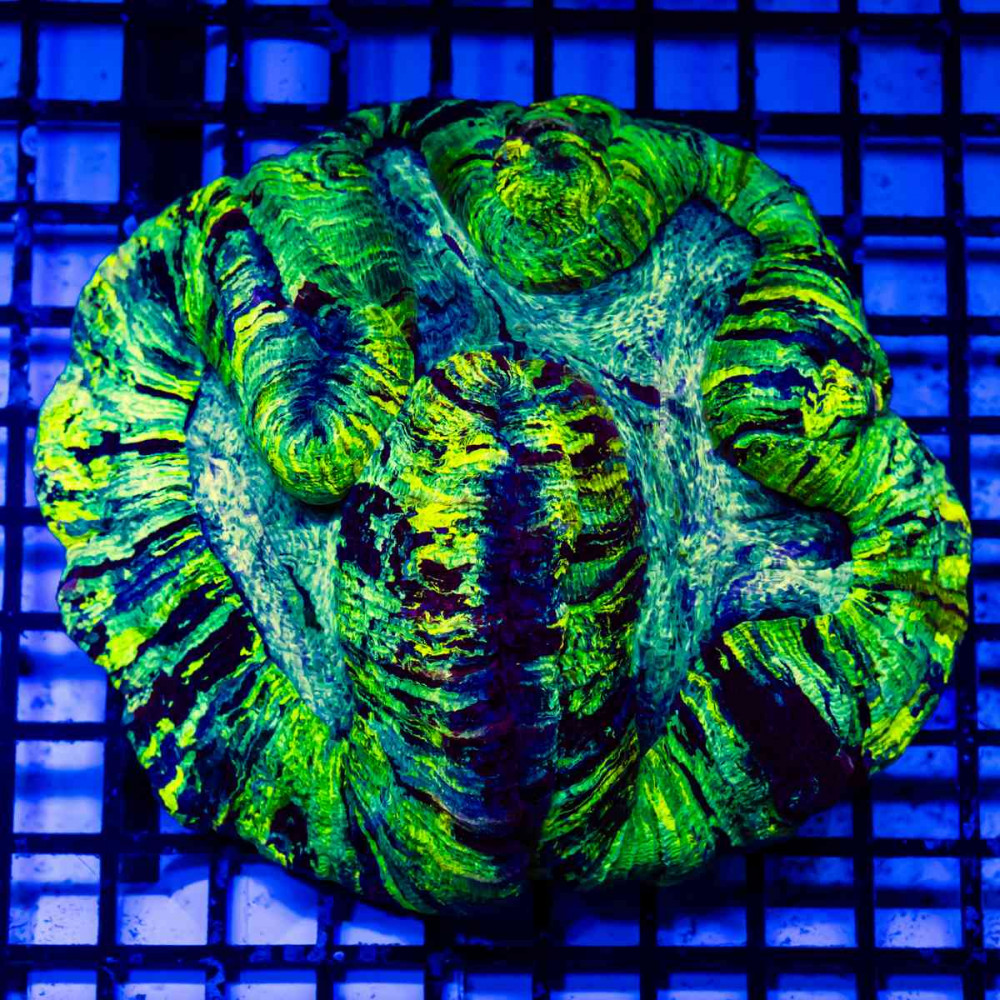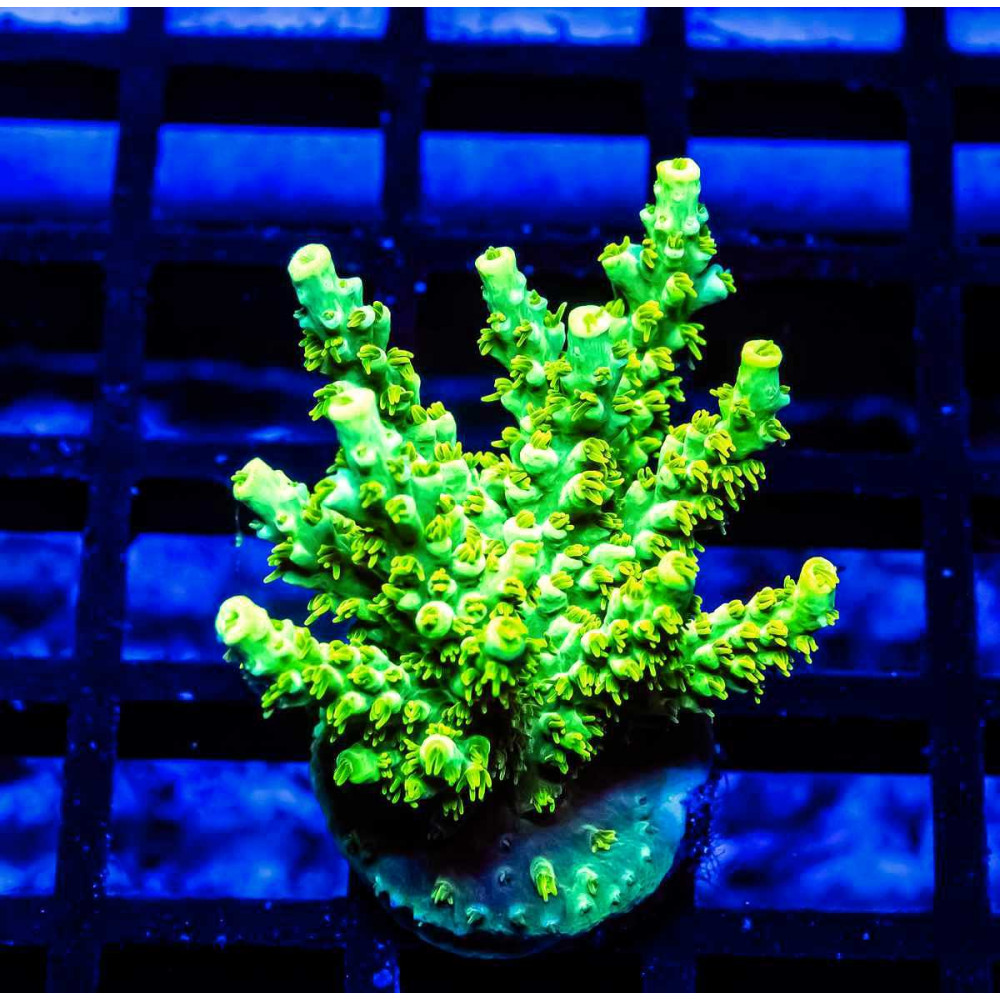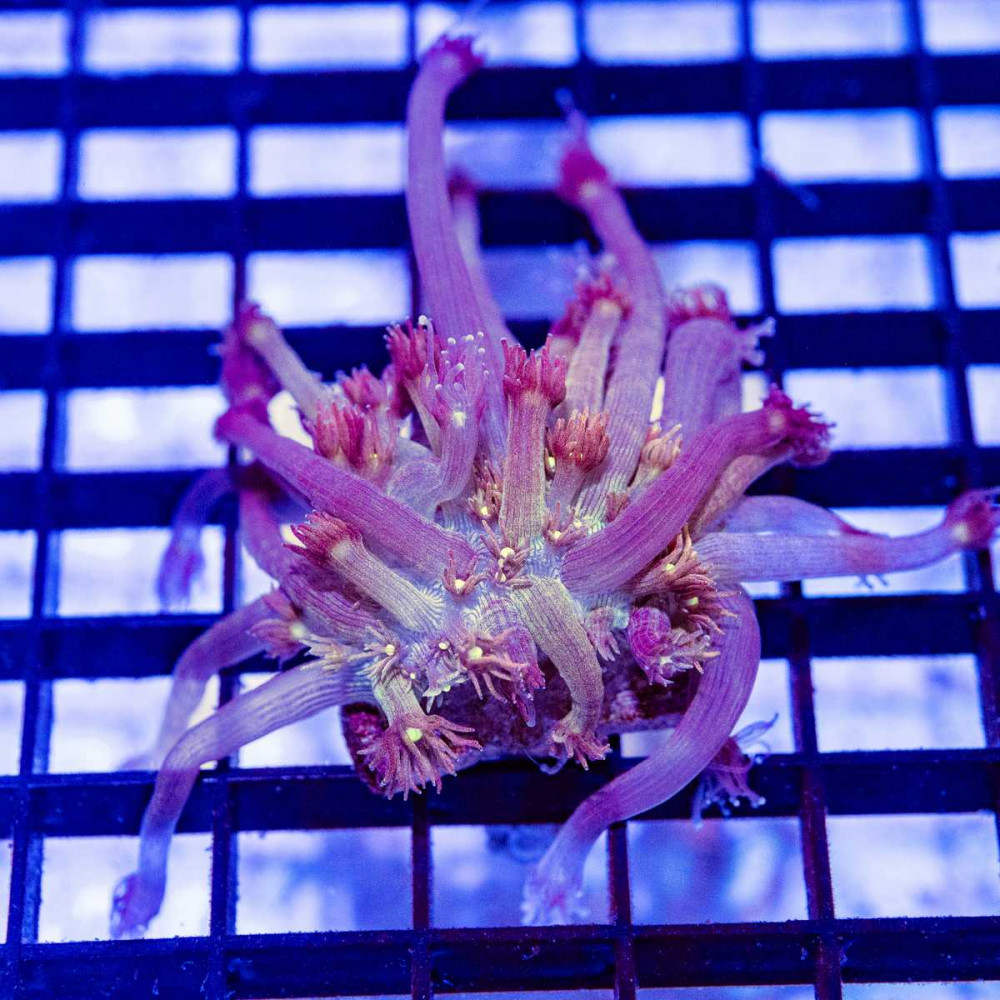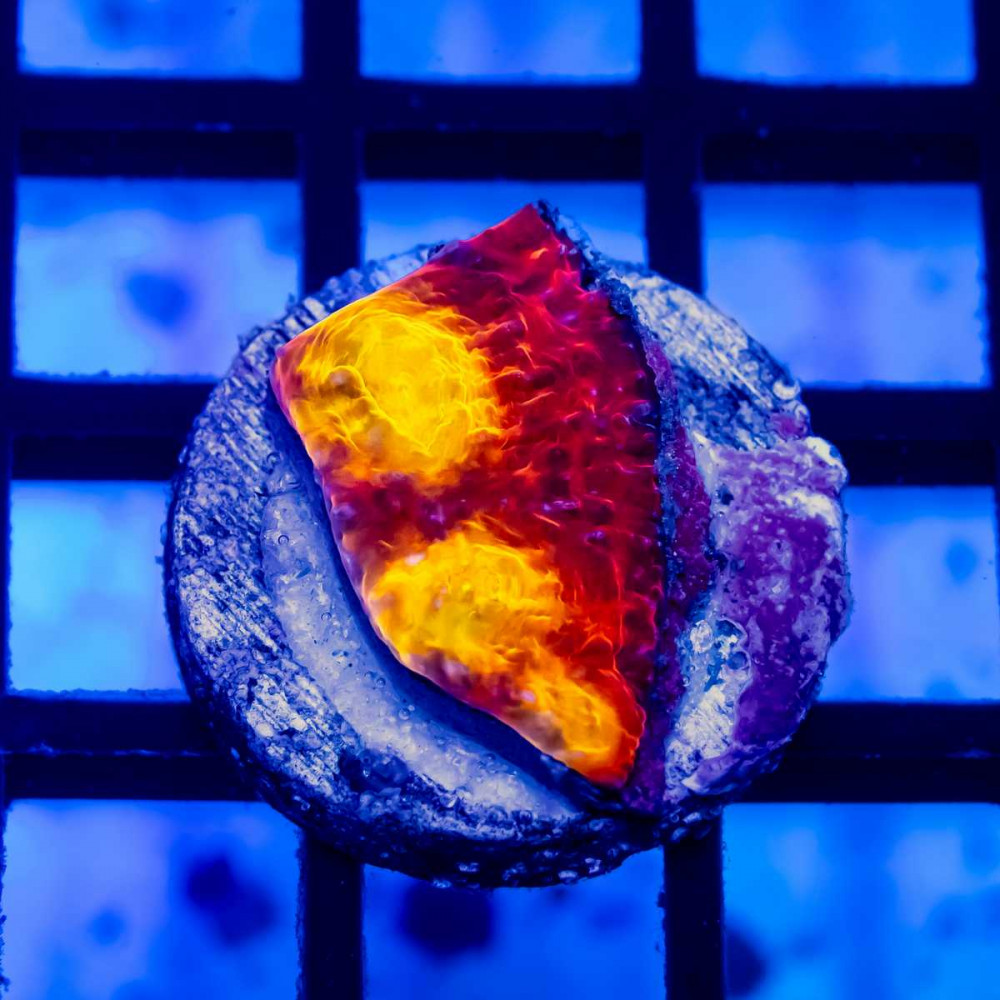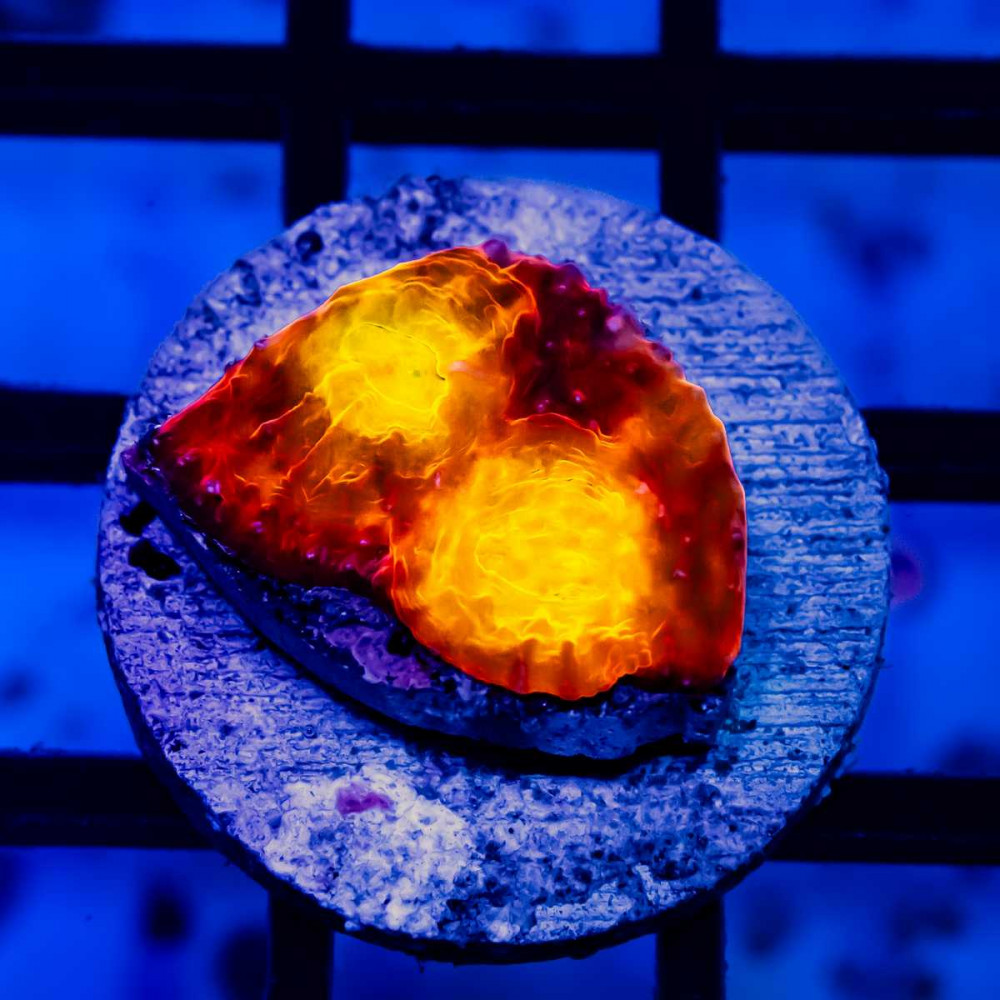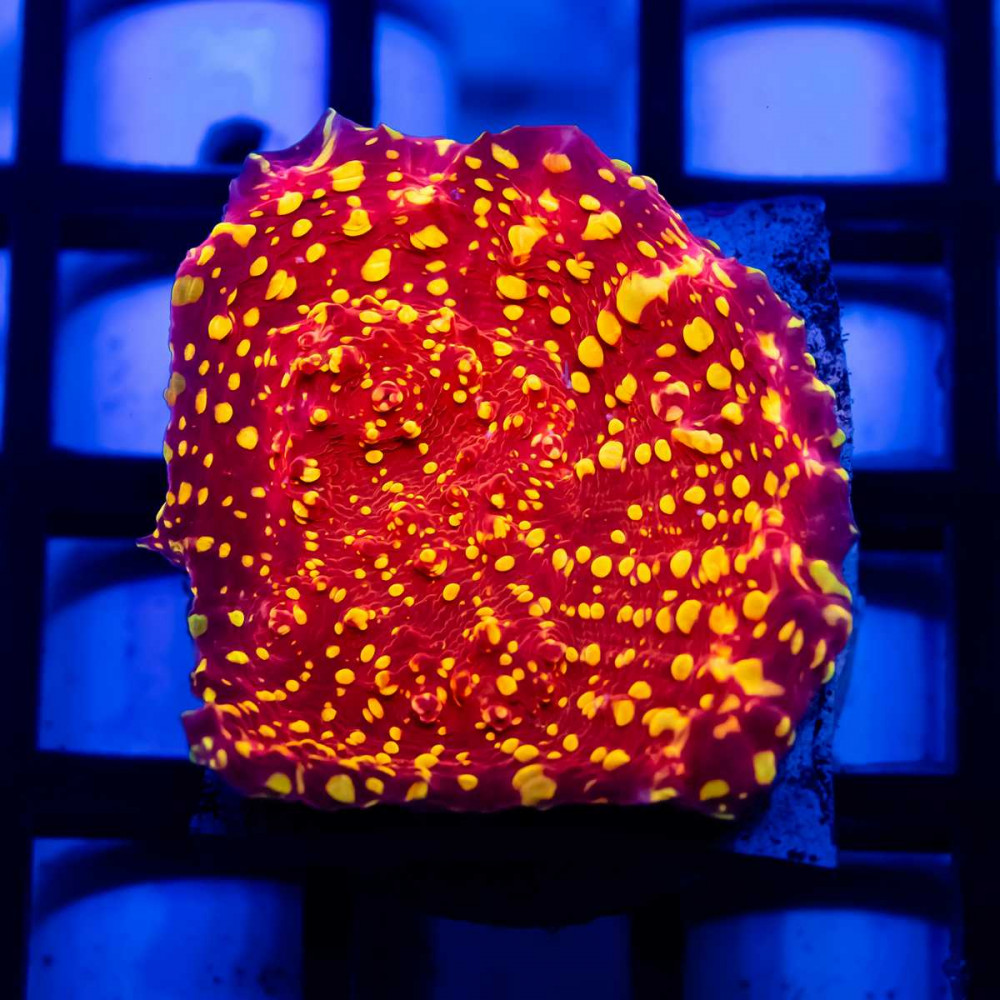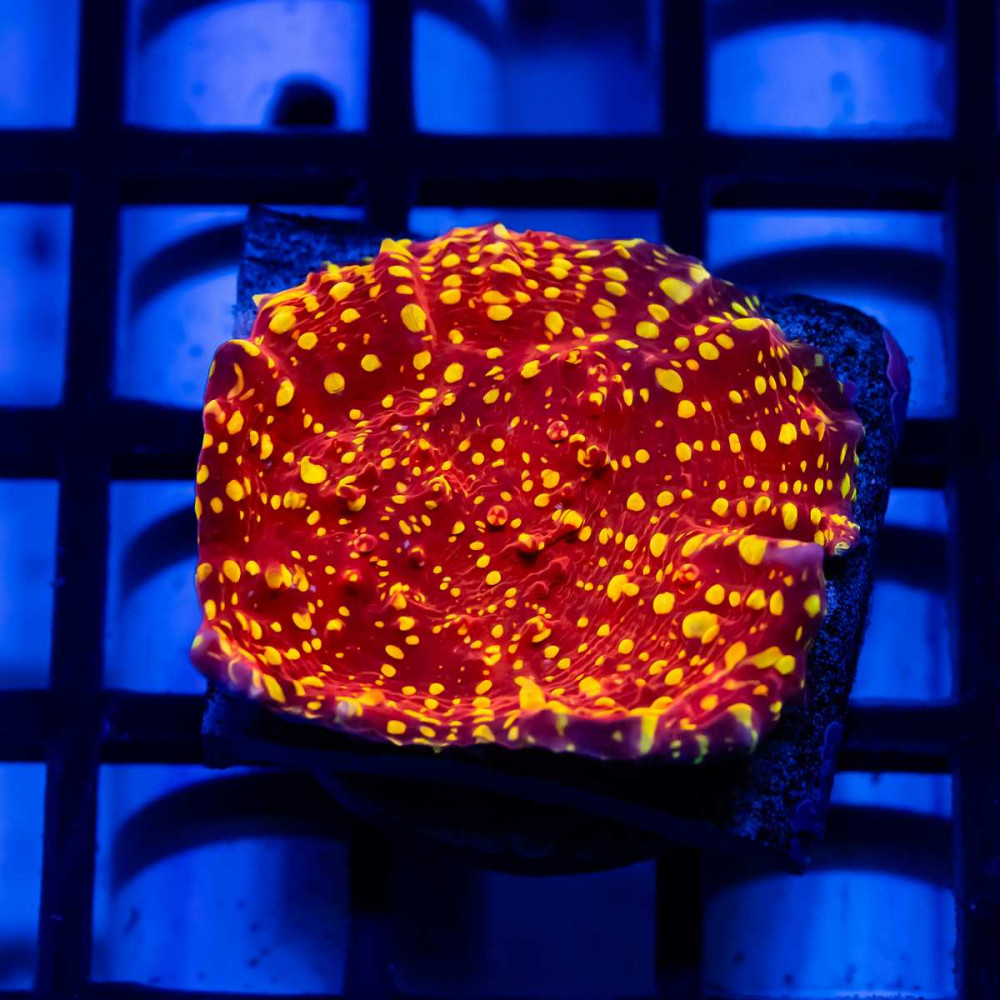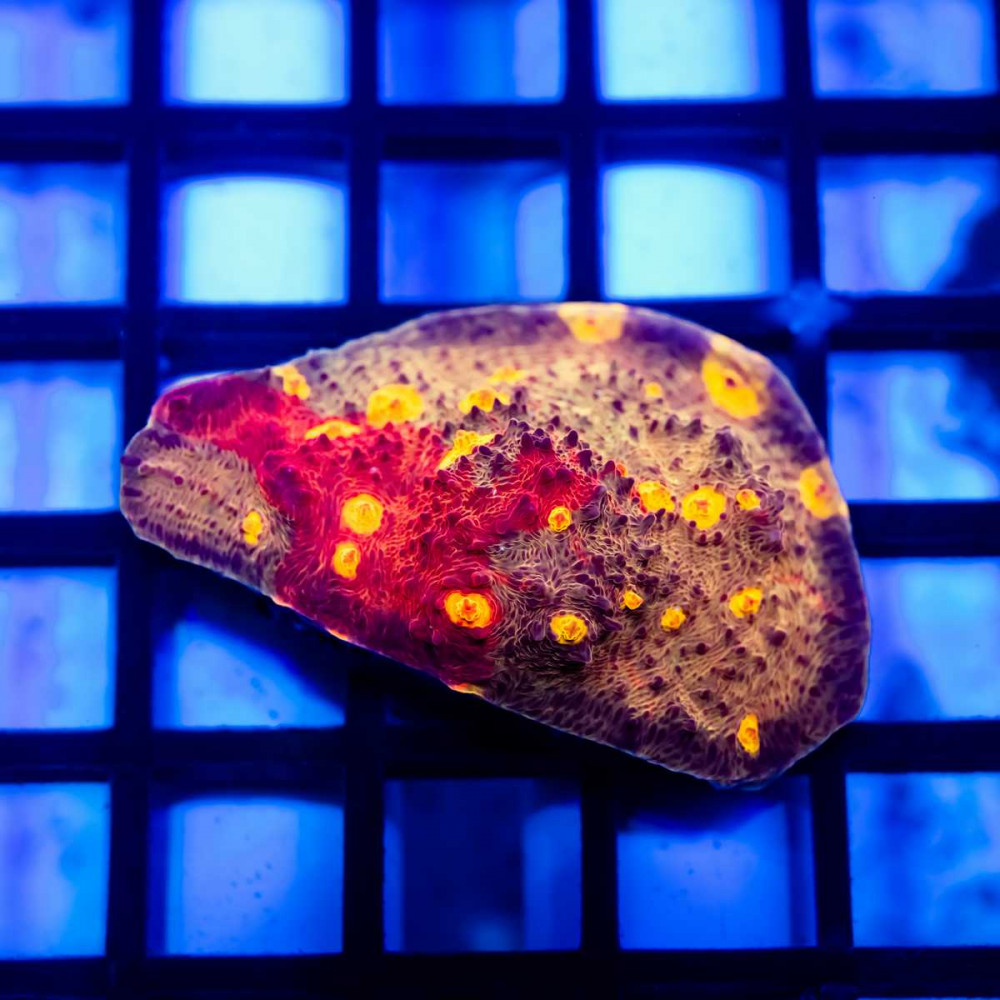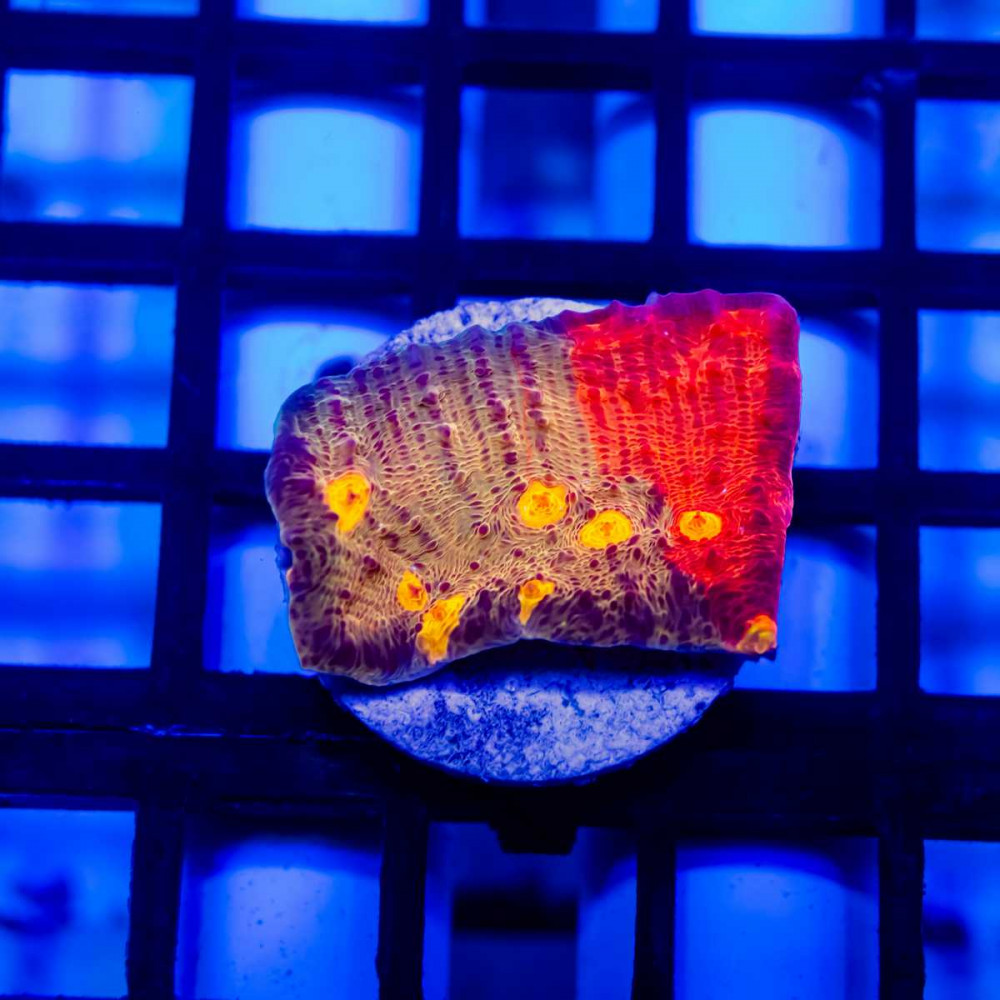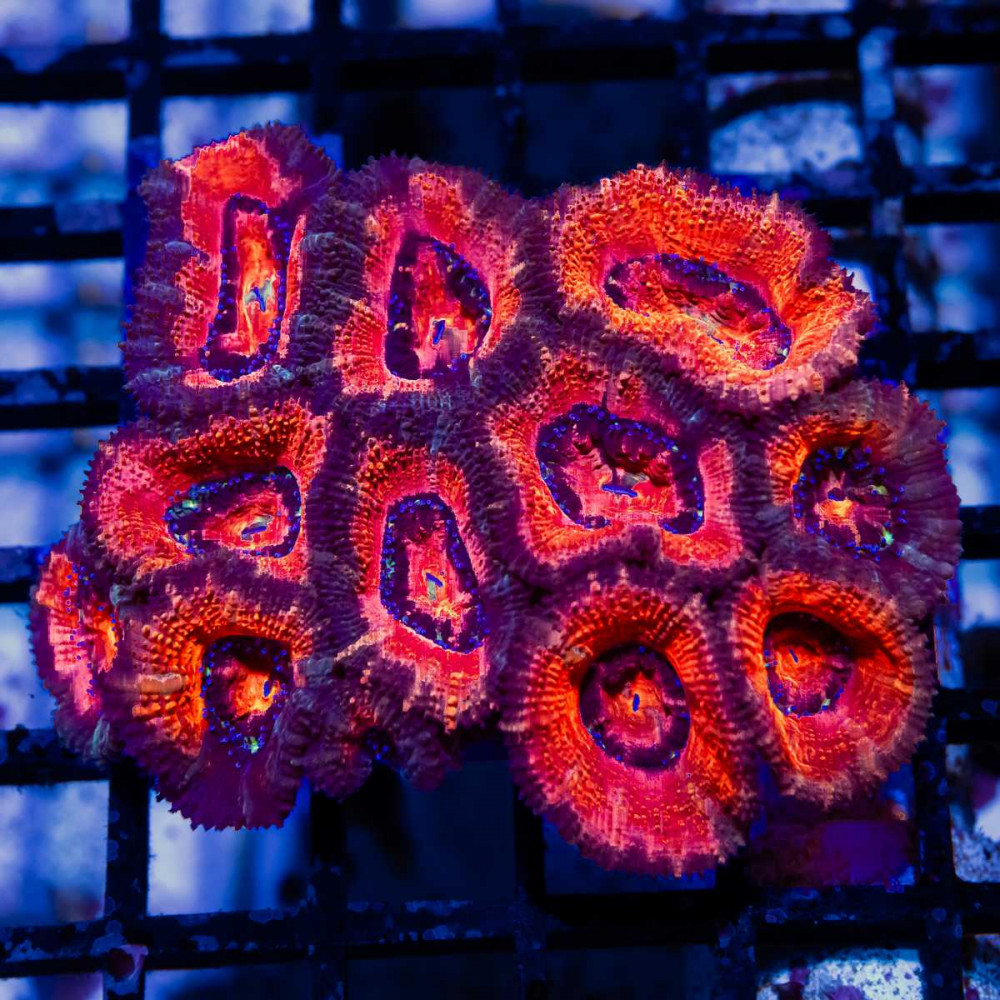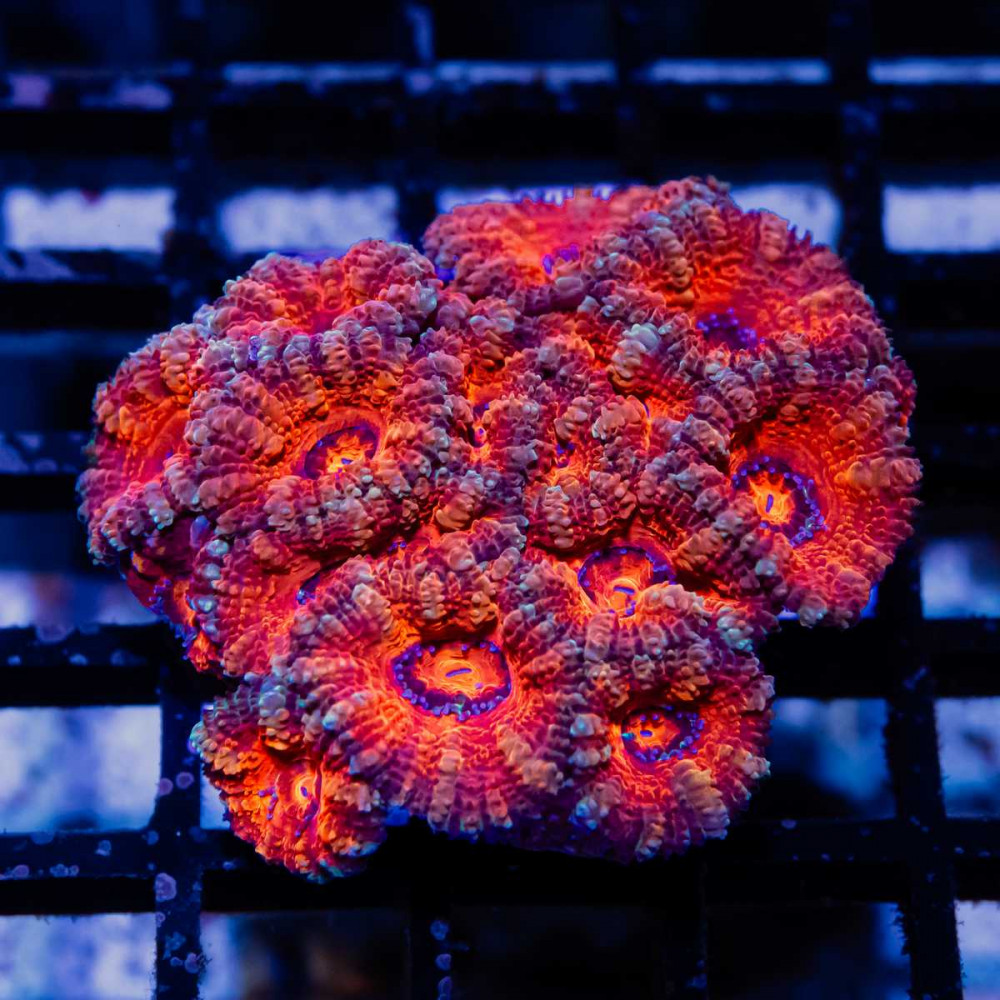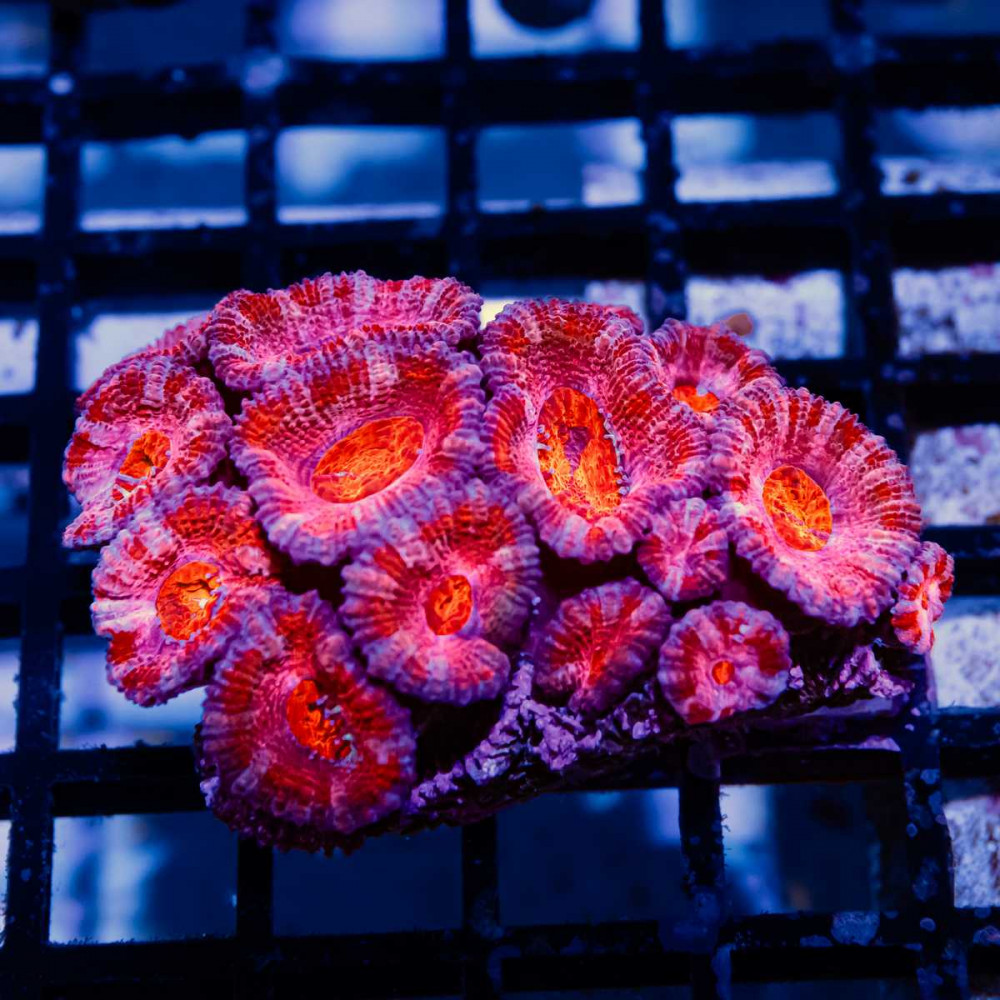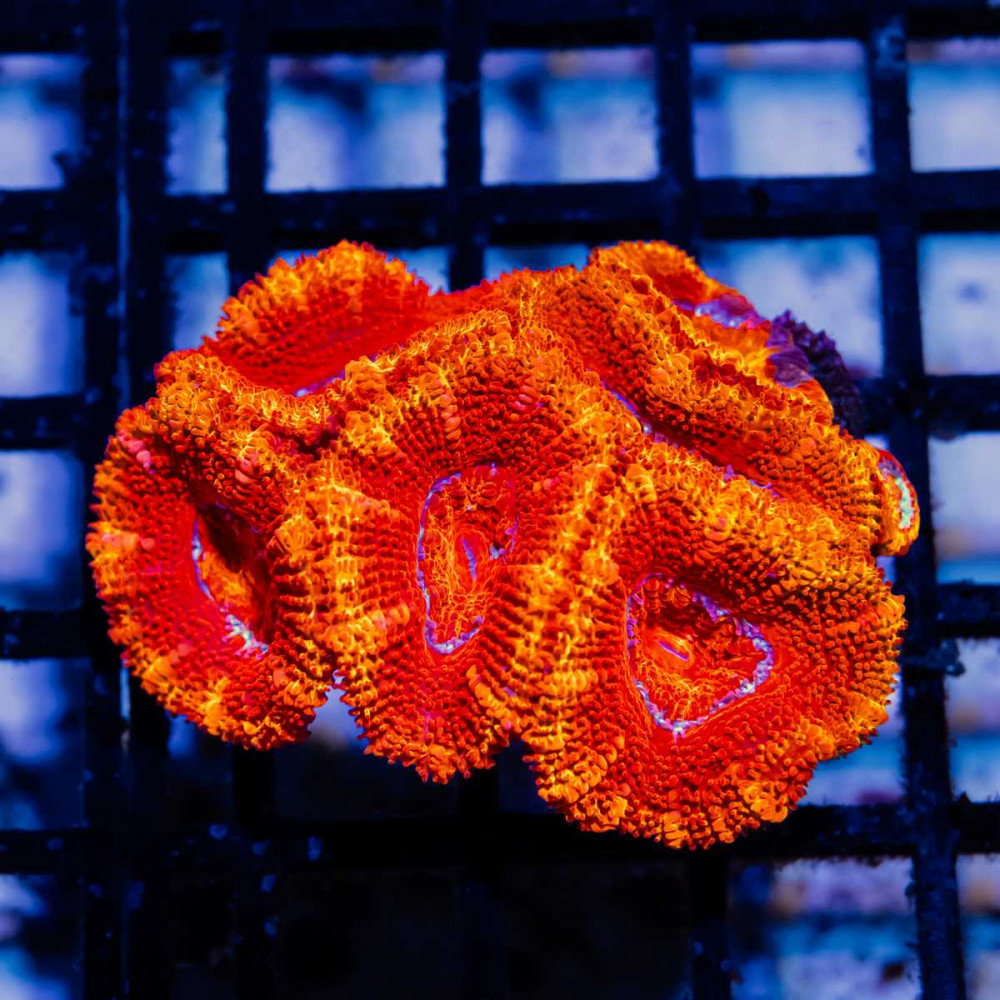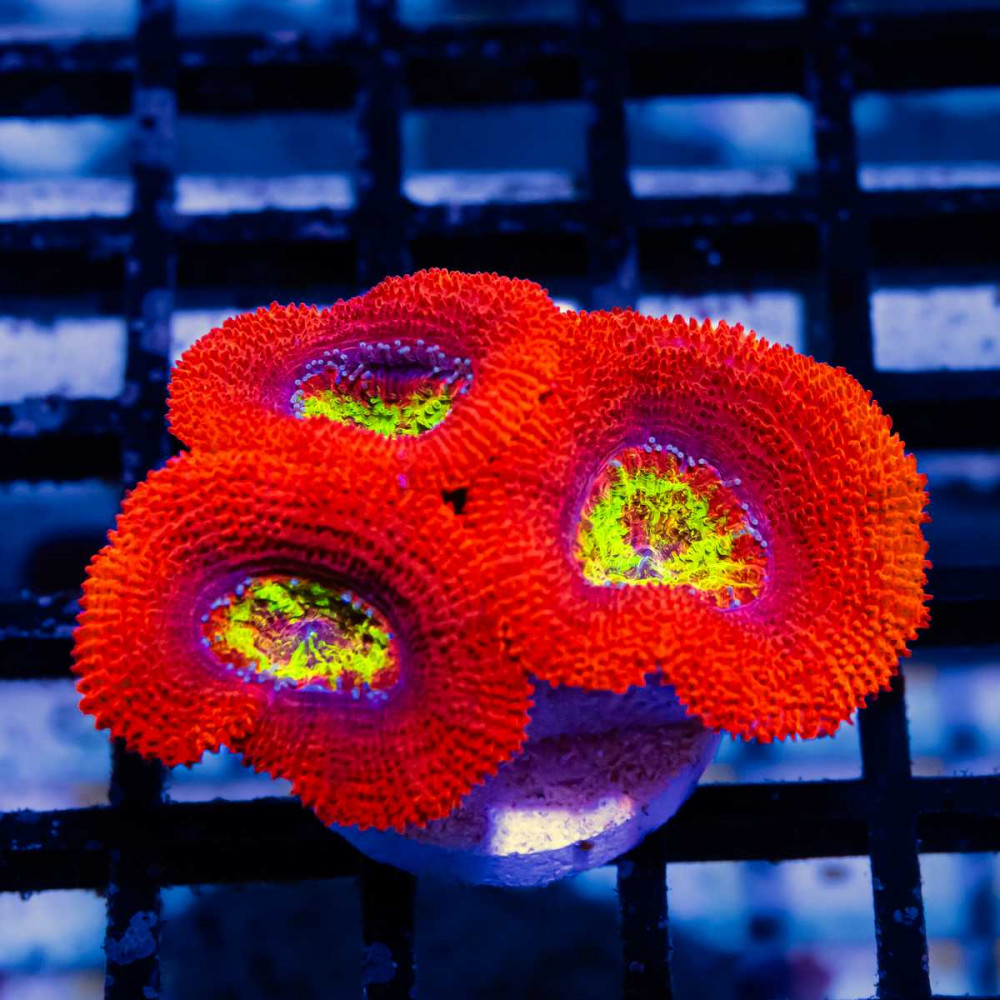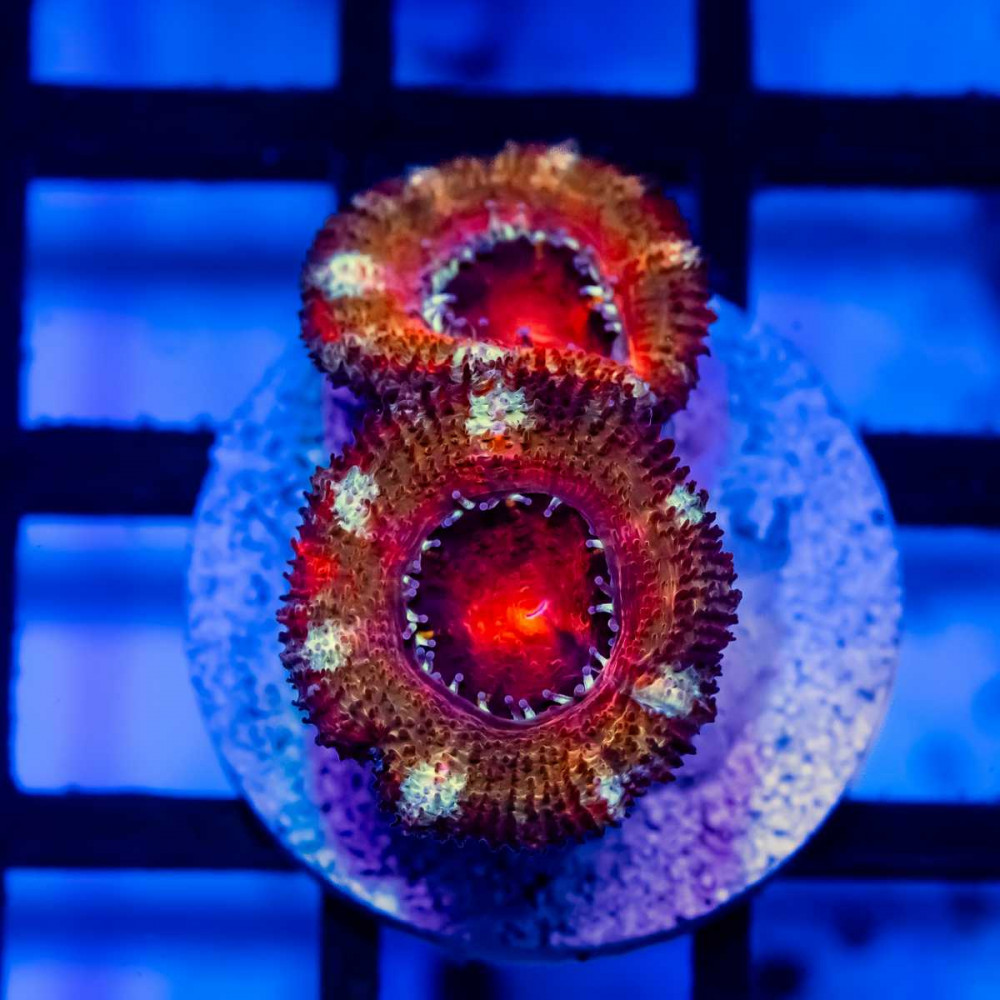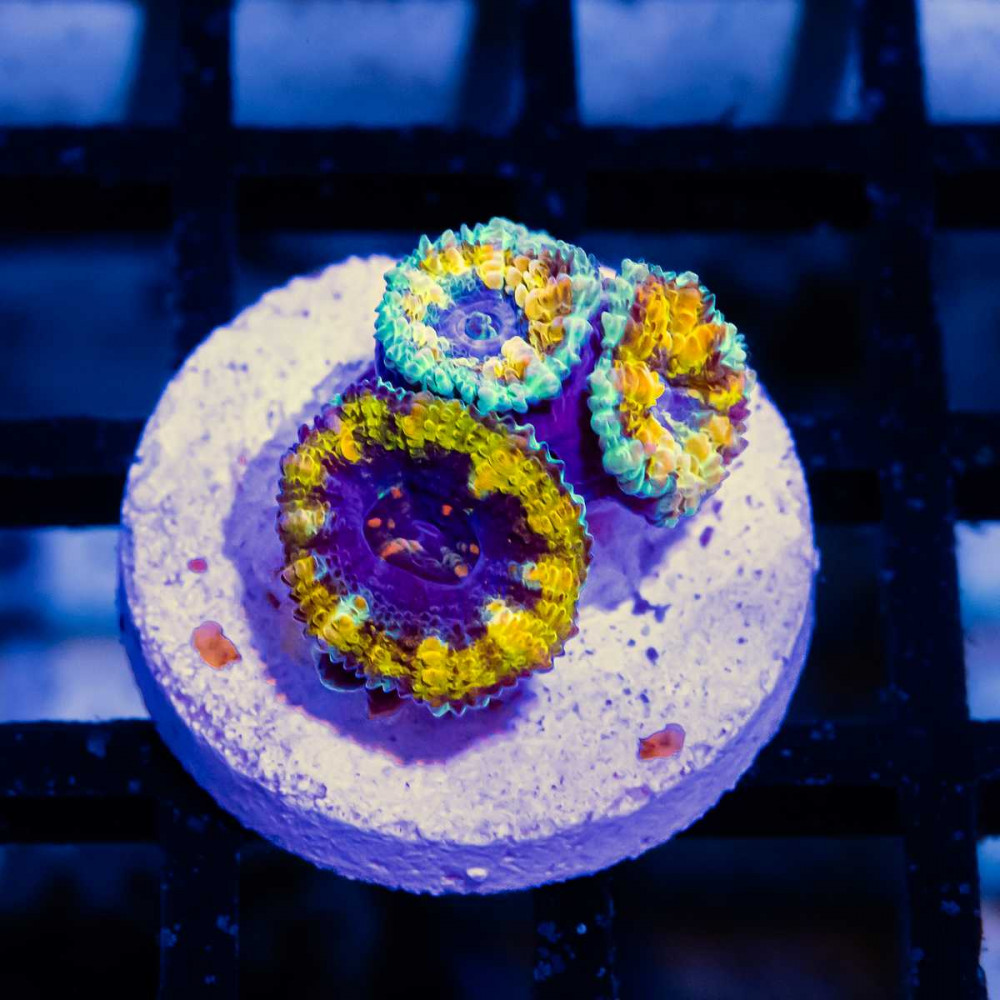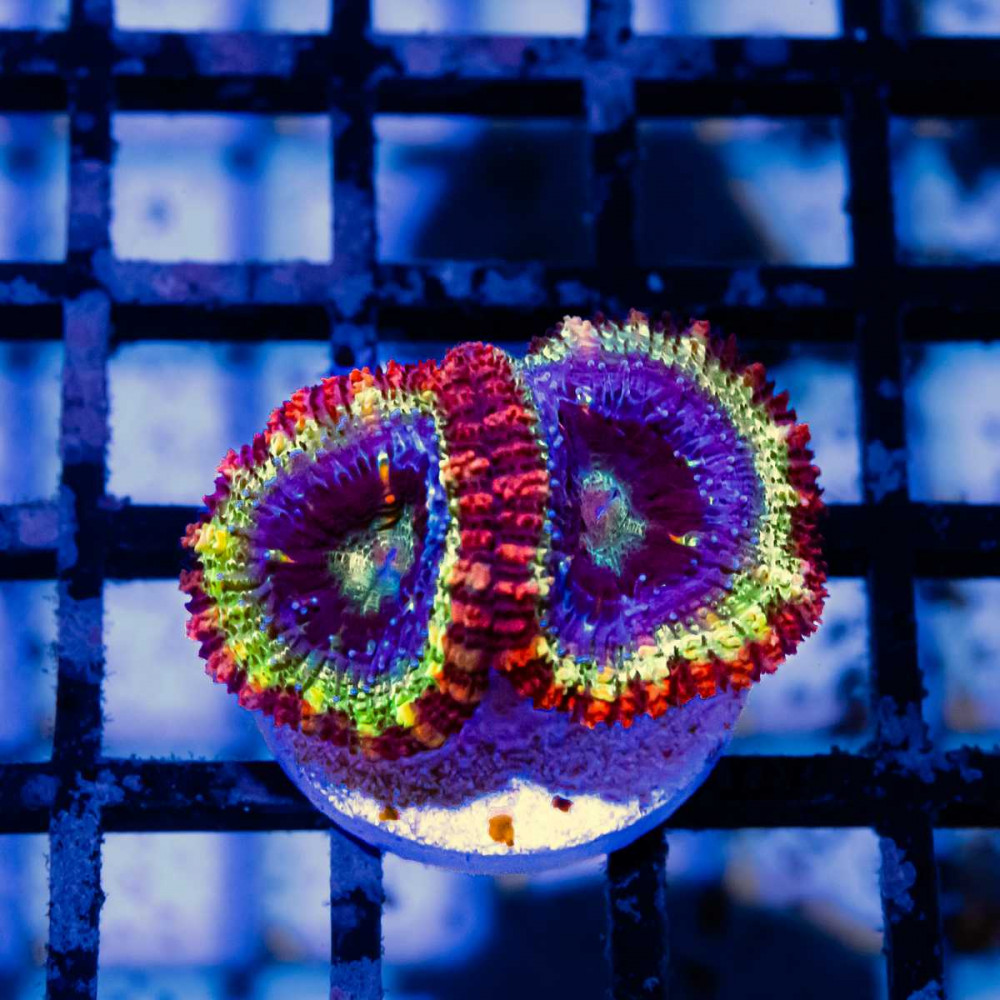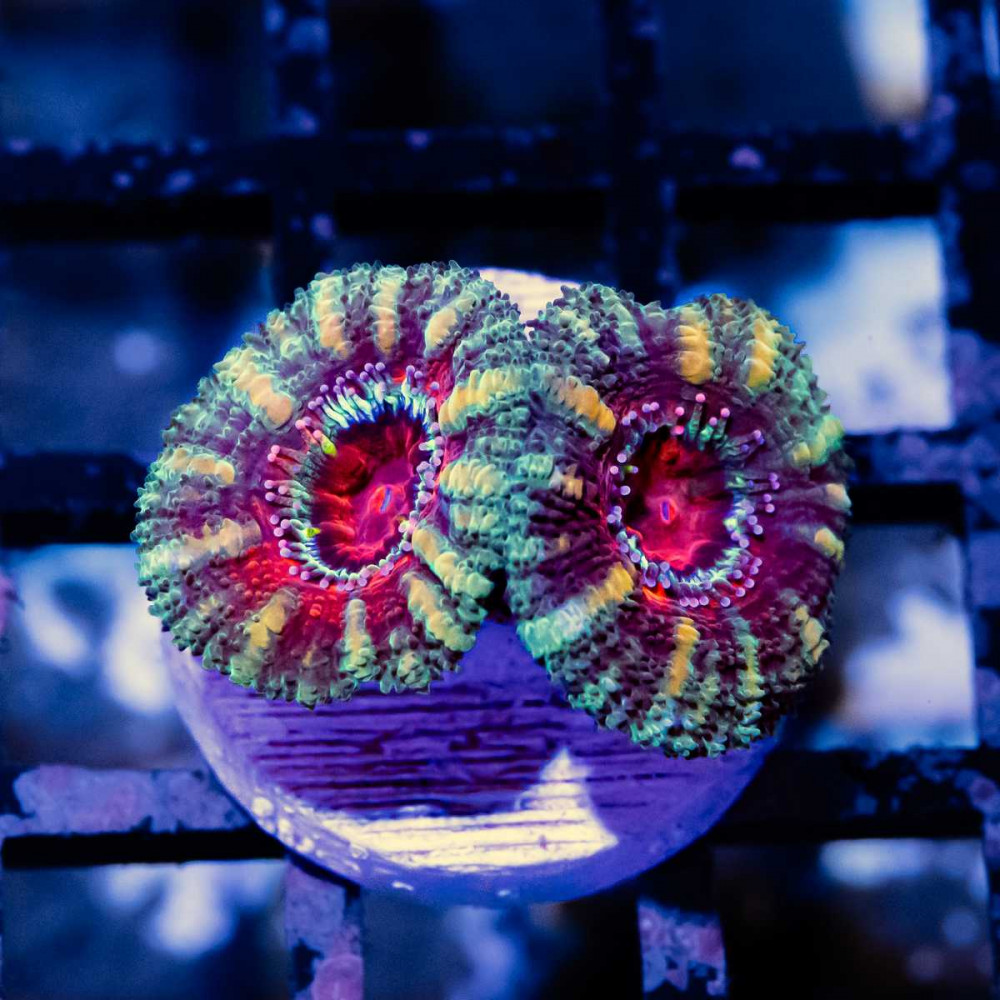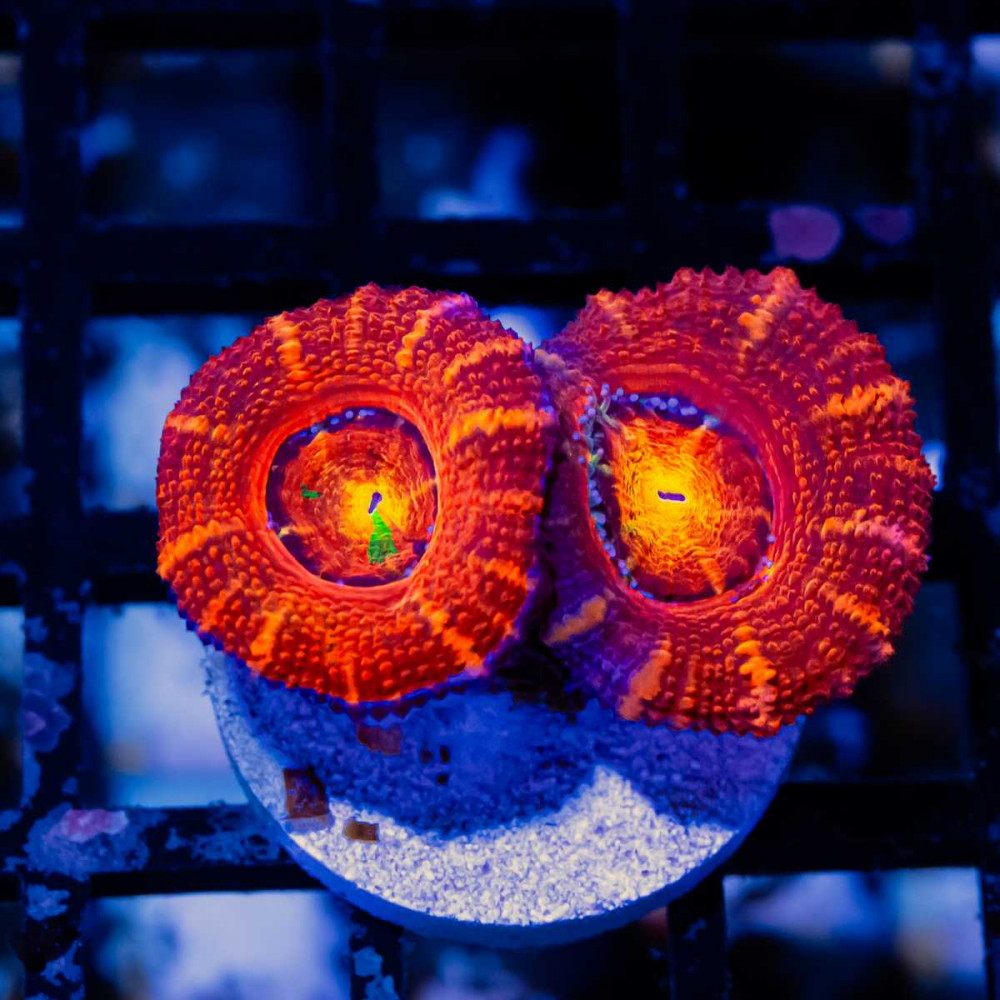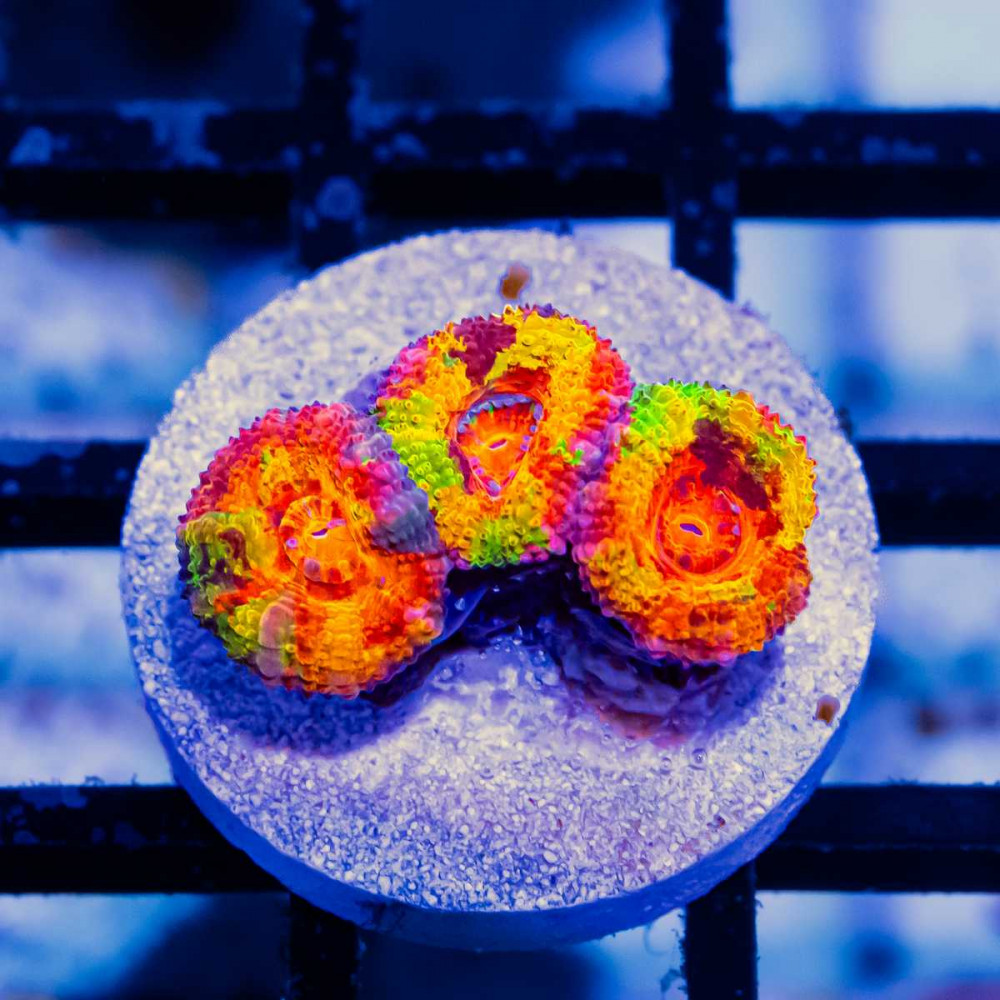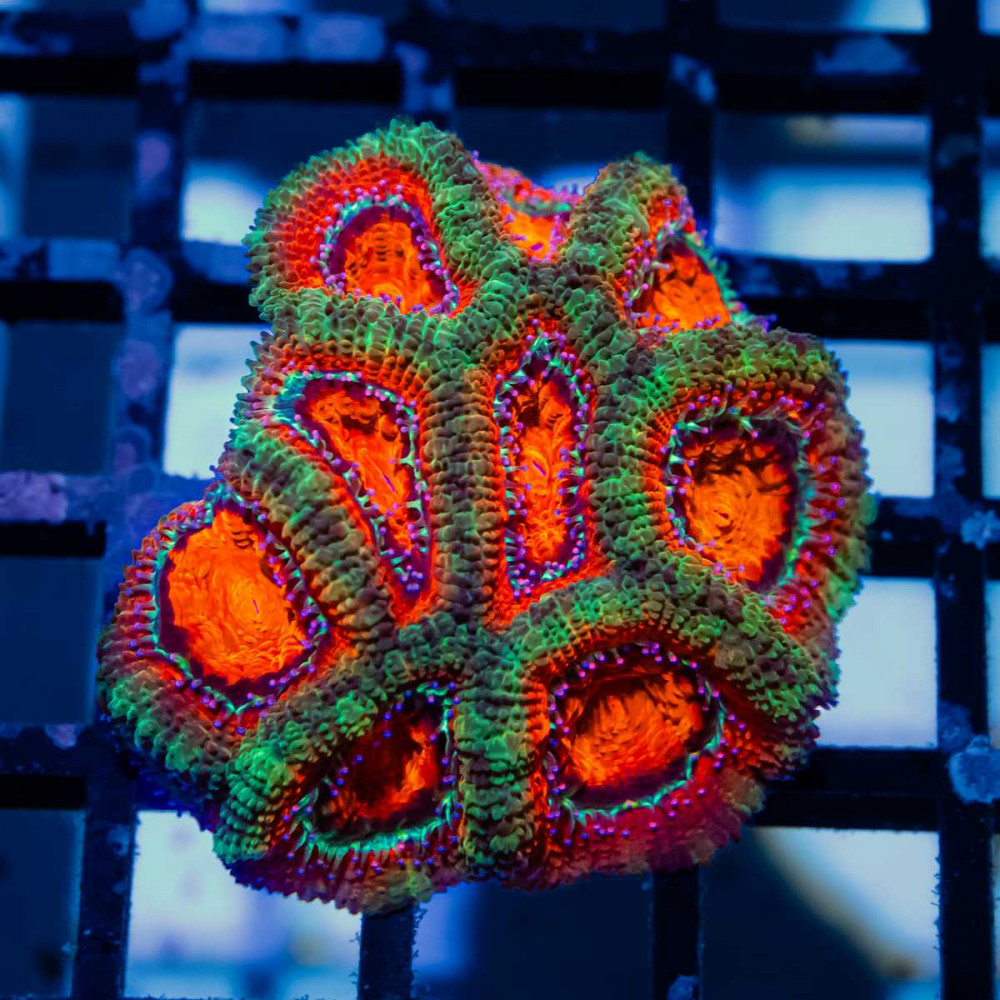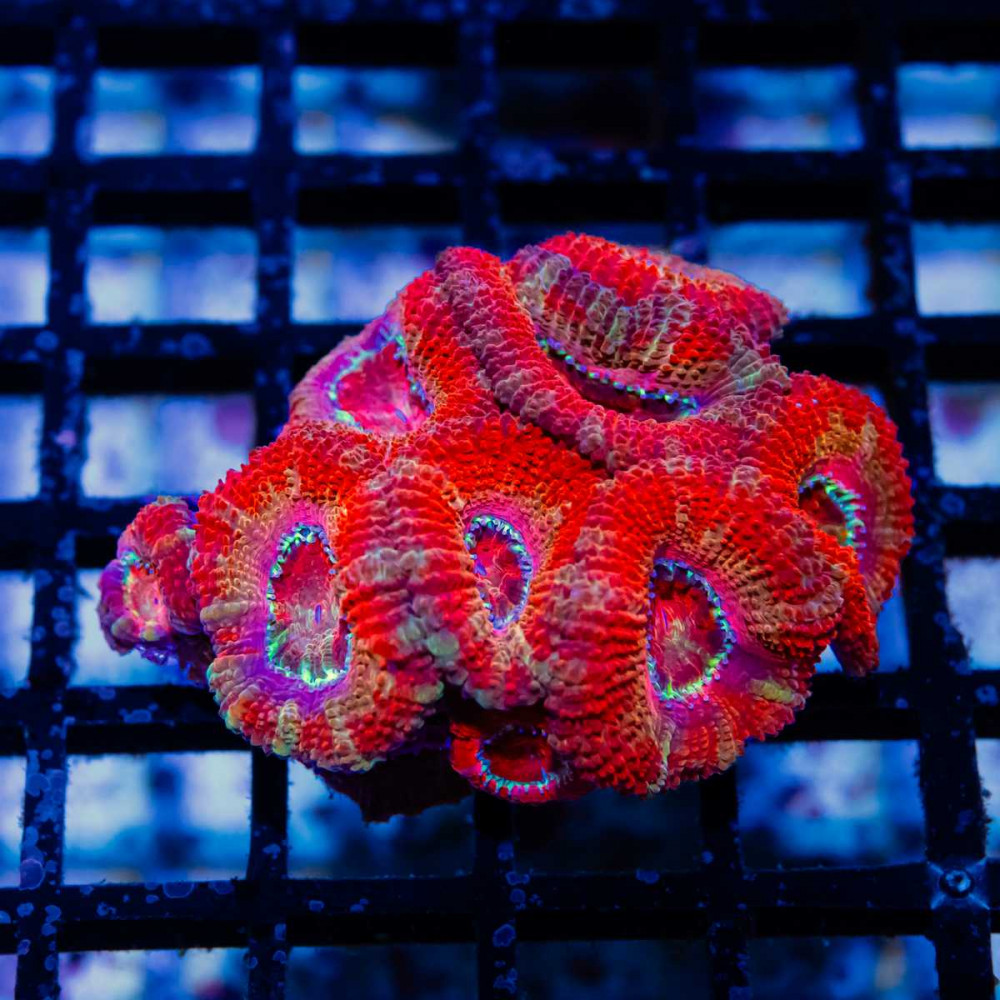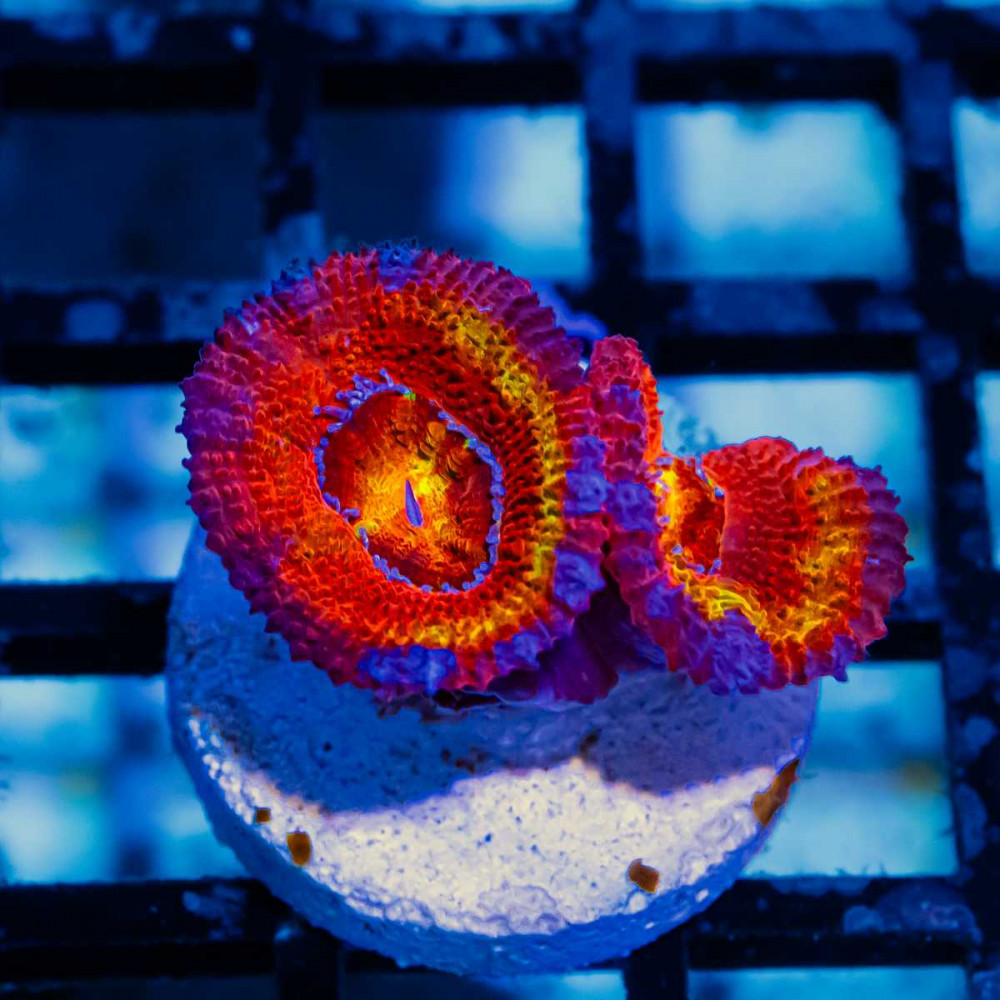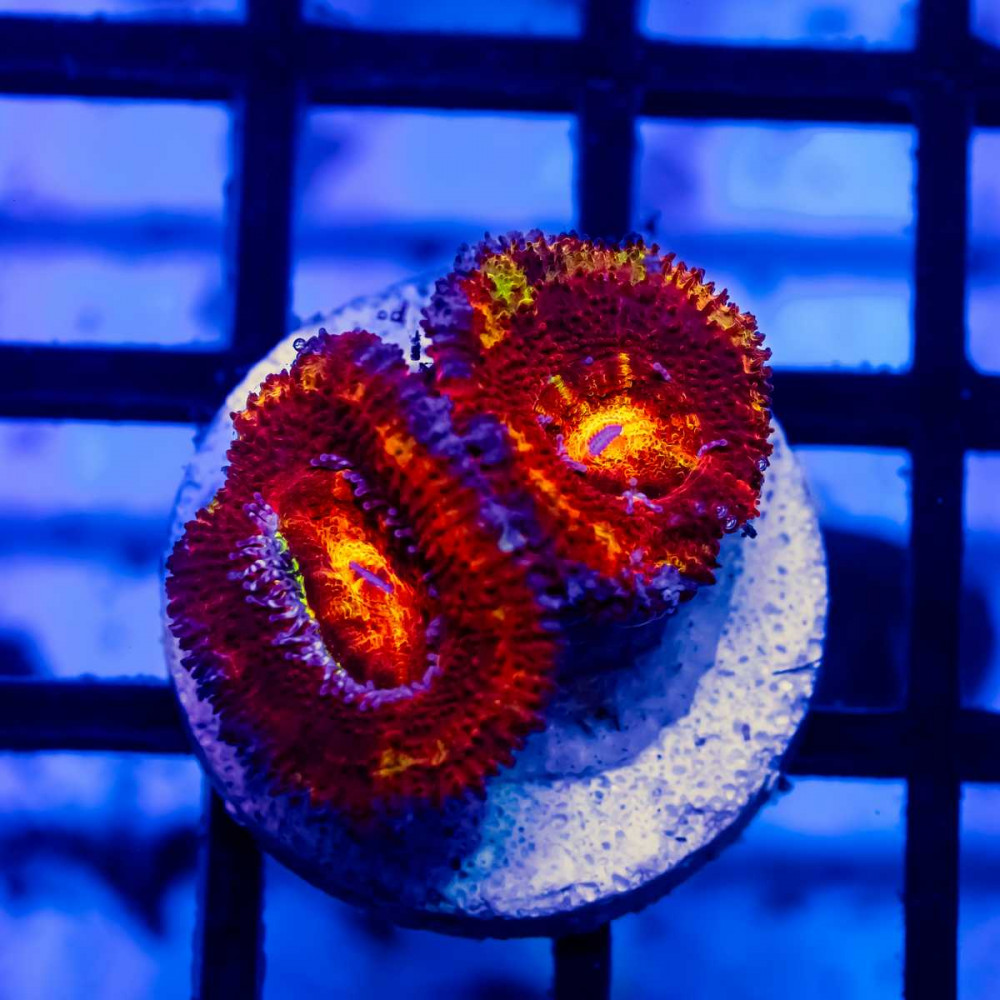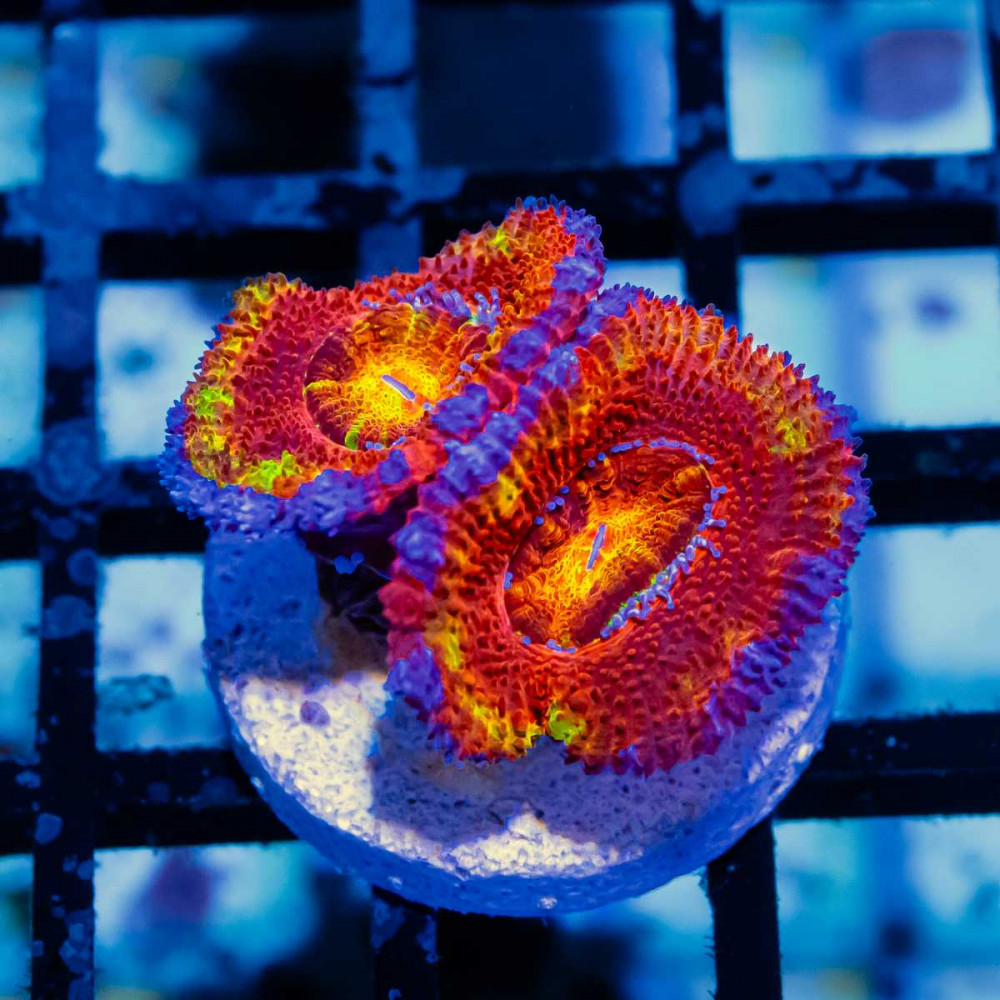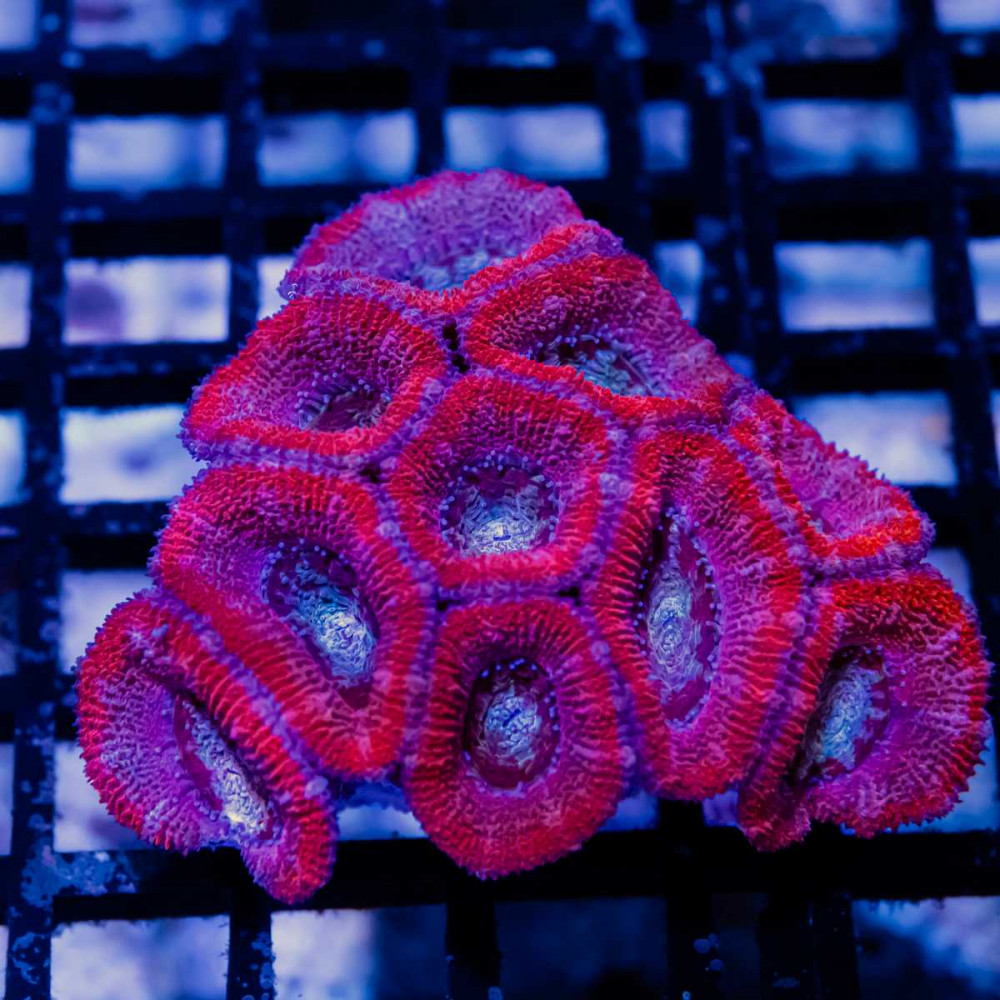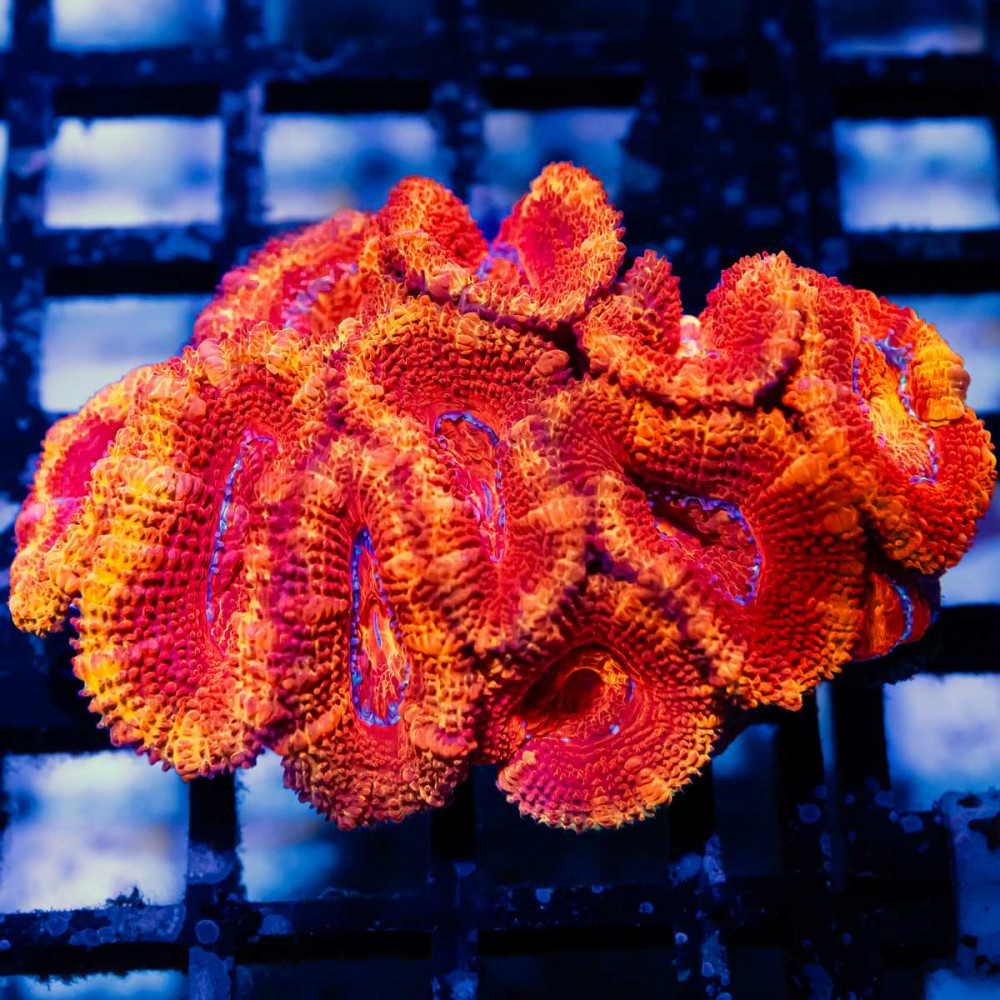Species Name : Hypselodoris Bullocki/apolegma
Care Level : Expert
Temperament : Peaceful
Color : Purple, White, Yellow
Diet : Carnivore
Reef Compatible : Yes
Water Conditions : 72-78° F, dKH 8-12, pH 8.1-8.4, sg 1.023-1.025
Max. Size : 2 inches (5 cm)
Origin : Indo-West Pacific Ocean
Family : Chromodorididae
Supplements : Calcium, Magnesium, Iodine, Trace Elements
Purple Nudibranch (Hypselodoris Bullocki/apolegma) is a species of colourful sea slug or dorid nudibranch, a marine gastropod mollusk in the family Chromodorididae. This nudibranch is found in the tropical Western Pacific Ocean.
The term "nudibranch" means "naked gill" and refers to the fringy, tassel-like gills visible on many species. This group include animals that we commonly refer to as "sea slugs" as well as the sea hares popular for algae control.
Purple Nudibranch (Hypselodoris Bullocki/apolegma) are easy to spot with bright purple or fuchsia bodies adorned with an opaque white edge on the mantle and yellow to orange gills and rhinophores typically. Some variation to these colors may be observed from specimen to specimen. A pair of tentacles called rhinophores on the nudibranch's head have scent receptors that allow the nudibranch to smell its food or other nudibranchs.
These two species are very similar and have only recently been reclassified as two "sister species" rather than regional variations of H. bullocki. The primary difference is the white margin which is sharp on H. bullocki and diffuses into the base color on H. apolegma.
These beautiful slugs are usually brilliantly coloured and this in itself can act as a deterrent against predators. Some sea slugs secrete acid from stinging cells in their tentacles while others secrete acid from cells in their mantle.
Nudibranchs are hermaphrodites, meaning that they have reproductive organs of both sexes.
Nudibranchs are slow moving, can swim or be propelled along either by muscular contraction or by millions of tiny hairs on the bottom of a fleshy 'foot', they have a voracious appetite and feed with a rasp like tongue.
They can be great members of a clean-up crew as they can sometimes eat algae.
Use caution when placing any nudibranch in your reef system if its diet is an unknown. Nudibranchs in aquariums are generally shortlived, both due to their natural short lifespans as well as the difficulty of meeting their dietary requirements.
-
No questions yet
You watched
New goods
Subscribe to news and get a 5% discount on your first order using the promo code.
You will receive the promo code by email immediately after subscribing.
You can apply the promo code after registration and authorizatio

